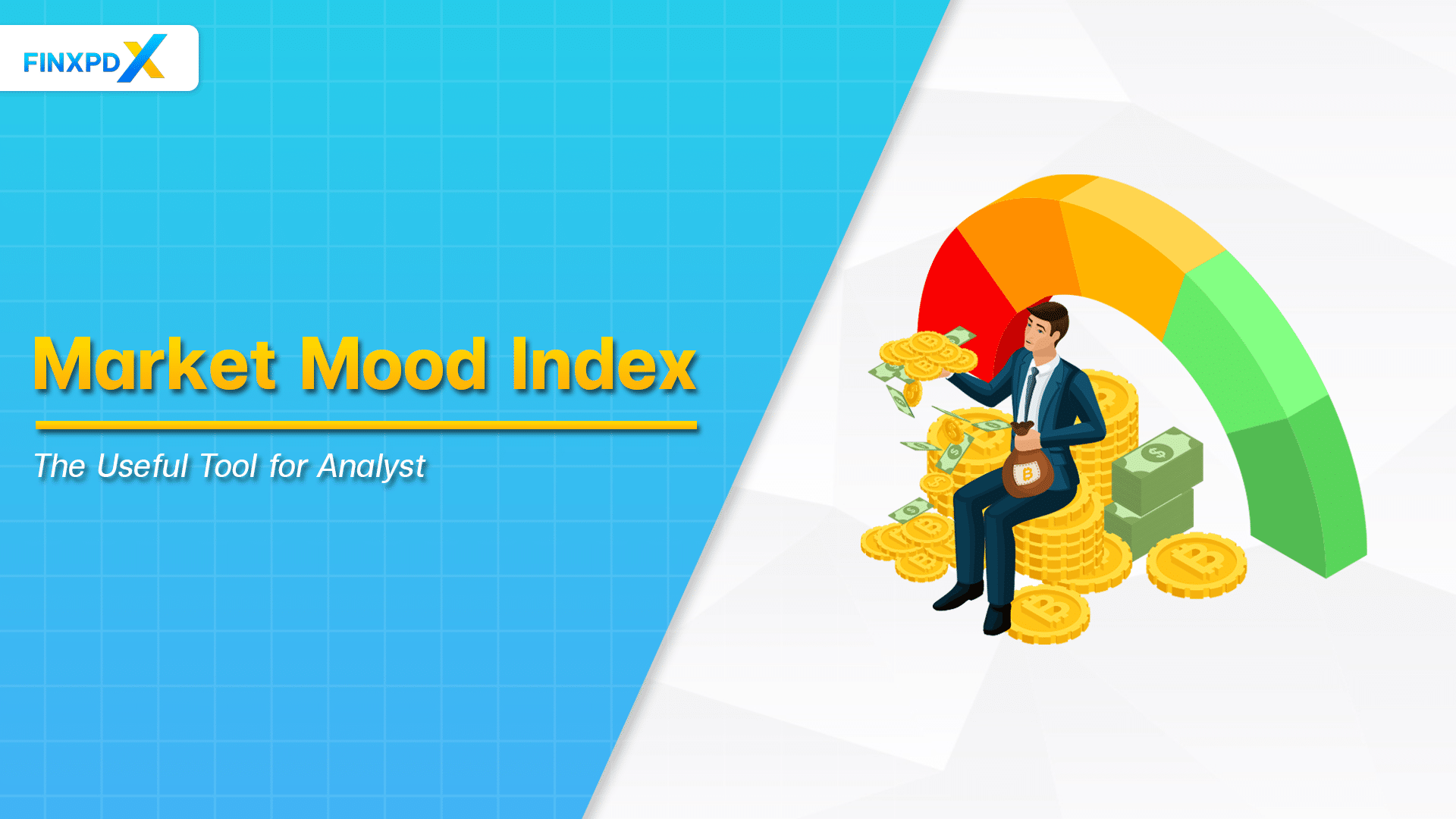Understanding market trends and sentiments is crucial for investors and analysts in the world of finance. This is where the market mood index (MMI) idea will be useful. The significance of the MMI lies in its ability to reflect current market sentiments and its predictive capabilities. By understanding and utilizing the market mood index, investors can navigate the complexities of the financial markets with greater confidence and precision.
This article covers the market mood index, explaining what it is, how to interpret it, and its five key zones. It also explores the factors influencing the index, how to use it for investment decisions, and its advantages and disadvantages.
What Is the Market Mood Index?
The market mood index (MMI) is an innovative financial tool designed to measure the prevailing sentiment in the stock market. It acts as a comprehensive gauge of the collective emotional state of investors, ranging from extreme fear to excessive optimism. This measure is made by analyzing various data points to capture the overall mood of the market. The data that will be used in consideration include market volatility, trading volumes, price trends, and economic reports.
Key Takeaways
- The market mood index (MMI) is an analytical tool used to gauge the overall sentiment of the stock market, ranging from extreme fear to excessive optimism.
- The MMI is derived from analyzing various data points like market volatility, trading volumes, and price trends.
- The MMI offers a simplified yet powerful insight into the market’s mood, aiding investors in understanding whether the market is bullish, bearish, or neutral.
- The MMI also has a predictive aspect, allowing investors to anticipate potential market movements.
- The MMI benefits short-term traders and long-term investors, as it helps align investment strategies with market trends.
How to Interpret the Market Mood Index
Interpreting the market mood index (MMI) effectively requires focusing on a few key aspects:
Understand the MMI Scale
Familiarize yourself with the MMI scale, where lower values typically indicate bearish sentiment (fear), and higher values reflect bullish sentiment (optimism). The middle range usually signifies a neutral market mood.
Observe MMI Trends
Pay attention to the direction of the MMI’s movement. An increasing MMI suggests growing investor optimism, potentially indicating a bullish market trend, while a decreasing MMI could signal rising pessimism and a bearish trend.
Correlate With Current Events
Align MMI readings with external factors such as economic reports, global events, and political news. This helps understand how these events impact investor sentiment and market mood.
Use MMI as Part of a Broader Strategy
Integrate MMI analysis with other financial tools and methods, like fundamental and technical analysis. MMI should be one component of a comprehensive investment strategy, not the sole basis for decision-making.
⚠️Tip: Proper understanding of how to interpret the MMI is crucial. Misinterpretation can lead to misguided investment choices.
5 Zones of the Market Mood Index

The market mood index (MMI) is divided into 5 distinct zones with numerical scores for a clearer understanding.
1. Extreme Fear Zone (<20)
Indicates a high level of pessimism, often signaling oversold market conditions and potential buying opportunities.
2. Fear Zone (21-40)
Shows general bearish sentiment, where investors exercise caution due to negative influences, often leading to defensive investment strategies.
3. Neutral Zone (41-60)
Reflects balanced market sentiment, suggesting a period of stability or uncertainty where investors might maintain a diversified portfolio.
4. Optimism Zone (61-80)
Represents bullish sentiment with positive outlooks, encouraging investors to adopt aggressive growth strategies.
5. Extreme Optimism Zone (>80)
Characterizes peak bullish sentiment, potentially indicating an overheated market and the need for cautious investment approaches.
Factors Influencing the Market Mood Index
Various factors impact the MMI, each playing a role in shaping market sentiment. Those factors include:
Economic Indicators
GDP, employment stats, inflation, and interest rates impact sentiment. Positive data often leads to optimism, but negative data leads to pessimism.
Political Stability and Policies
Political events and policy changes affect confidence. Its stability boosts investor’s confidence, while instability fosters uncertainty.
Global Events
Geopolitical conflicts, natural disasters, and pandemics can cause market fear and uncertainty.
Corporate Performance
Earnings reports and corporate developments influence sentiment. Positive news drives optimism, but negative news induces fear.
Market Trends and Historical Data
Current market trends and past performance shape investor outlook. Positive trends encourage optimism, but opposing trends lead to pessimism.
Investor Behavior and Psychology
Collective investor psychology, including herd mentality and confidence levels, directly impacts MMI readings.
How to Use the Market Mood Index for Investment
The market mood index (MMI) in investment strategies can significantly enhance decision-making. Here’s a practical approach to integrating the MMI into your investment process:
Identifying Market Trends
The MMI serves as a tool for discerning current market sentiment and guiding investors toward appropriate bullish or bearish strategies.
Strategic Market Timing
MMI readings offer vital insights for the optimal timing of market entries and exits, which will be beneficial at points of extreme sentiment.
Alignment With Risk Tolerance
MMI’s sentiment analysis assists in aligning investment risk with the current market mood, advocating reduced exposure in fear zones and increased exposure in optimism zones.
Portfolio Diversification Decisions
The MMI aids in tailoring diversification strategies, suggesting a shift towards defensive assets in bearish sentiments and growth-oriented assets in bullish sentiments.
Contrarian Investment Opportunities
Extreme MMI values can indicate opportunities for contrarian investment strategies, like buying in high fear and selling in high optimism.
Holistic Decision-Making Approach
Incorporating MMI insights with other financial analysis tools, such as fundamental and technical analysis, ensures a well-rounded investment decision process.
Advantages & Disadvantages of the Market Mood Index
Advantages
- Sentiment analysis tool
- Decision-making aid
- Market mood indicator
- Risk management support
- Predictive insights
Disadvantages
- Need for complementary tools
- Risk of misinterpretation
- Delayed market reaction
- Herd mentality risk
- Data limitations
Advantages of MMI
- The MMI is invaluable for assessing market sentiment. It offers deep insights into investor emotions and behaviors.
- This index aids informed investment decision-making, especially in volatile markets.
- The MMI effectively indicates prevailing market trends, assisting in identifying bullish or bearish conditions.
- It aligns investment strategies with market sentiment, aiding effective risk management.
- The MMI provides predictive insights, anticipating market movements for strategy adjustments.
Disadvantages of MMI
- There needs to be more than the MMI as a standalone tool. It requires complementation with other market analysis methods.
- Misunderstanding MMI readings can lead to misguided investment decisions.
- The index might not reflect sudden market changes immediately due to its reliance on accumulated data.
- Heavy reliance on the MMI can result in a herd mentality, where investors follow the crowd.
- The effectiveness of the MMI is dependent on the quality and scope of the underlying data, which can sometimes be limited.
Conclusion
In conclusion, the market mood index (MMI) is a valuable tool for gauging market sentiment, but its effectiveness relies on a comprehensive investment approach. By interpreting the MMI, investors can identify market trends, align their strategies with current sentiment, and make informed decisions about timing their entries and exits. Understanding the factors influencing the MMI, such as economic indicators and political stability, helps refine its readings and tailor investment strategies accordingly.
The MMI also reveals contrarian opportunities, signaling potential buying or selling points in extreme sentiment scenarios. However, to fully leverage the MMI, it should be integrated with other tools, such as technical and fundamental analysis. This combined approach empowers investors to navigate market complexities with greater confidence and success.
FAQs
The market mood index (MMI) is a tool that measures stock market sentiment, reflecting the collective emotions of investors.
The MMI is calculated using various data points like market volatility, trading volumes, and economic indicators and analyzed through complex algorithms.
The MMI interprets investor emotions, ranging from fear to optimism, indicating the prevailing sentiment in the market.
The frequency of MMI updates varies, often depending on the model and data sources used. It can range from daily to real-time updates.
While the MMI can provide insights into potential market trends, it’s not a definitive predictor of crashes or booms. It should be used as part of a broader analysis.
Related Articles:
- Find Best Types of Trading in the Stock Market Now!
- FOMO Trading: Spotting and Tackling the Hidden Enemy
- Margin Money Magic: Secrets to Smarter Trading
- Profit Booking: Smart Strategy for Big Gains
Read more: Stocks








